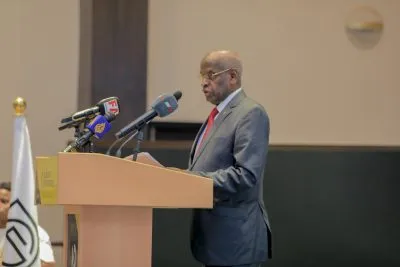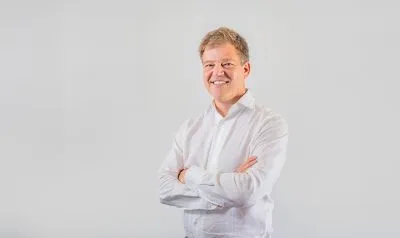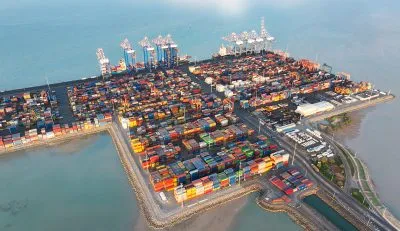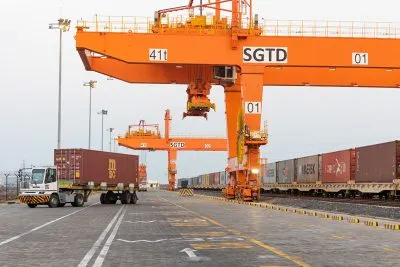African Business: We’re seeing rapid urbanisation, similar to many cities in Africa. What is the role of the DGPU (Délégation Générale à la Promotion des Pôles Urbains) exactly?
The General Delegation for the Promotion of the Urban Poles of Diamniadio and Lac Rose (DGPU) is an administration attached to the presidency that was launched in 2014. Its mission is to assist the government in defining the policy for the development and promotion of the urban centres – what we call “poles” – of Diamniadio and the Lac Rose and to coordinate its implementation.
You can say that the DGPU is a public developer, in charge of creating two new cities that will relieve Dakar and allow the development of productive new urban centres, that will also help develop industry and create jobs. We are ensuring great connectivity, and their proximity to Dakar make them very attractive. We want these clusters to be engines of growth.The m
Did you have a specific approach to urban planning?
Unlike Dakar, which has tried to define spaces for different activities – administrative, industrial and residential areas – we decided from the outset to create new towns on the basis of functional and social needs. The 1,644 hectares have been divided into 4 autonomous districts, which function as cities within the city of Diamniadio.
In the first district you have the Abdou Diouf Conference Centre, which was opened during the Francophonie conference in November 2014. You will also find the Diamniadio Exhibition Centre, the Ousmane Tanor Dieng Ministerial Sphere and the United Nations House. The objective is to help reposition Dakar as a centre for MICE [Meetings, Incentives, Conferences and Exhibitions], for events-related business tourism. And since then we have hosted many international events there.
In the second district are the Amadou-Mahtar M’Bow University, which will eventually welcome 30,000 students. So here you will find research and training centres, to help develop the knowledge economy. Alongside the university, we have the second ministerial sphere of Diamniadio, the Abdoulaye Wade Stadium and other facilities under construction.
The third district is the industrial hub, with the APROSI international industrial park and the Market of National Interest – which allows the storage and distribution of all the horticultural production of the Dakar and Thies regions, and the distribution of meat and fish products to the markets of Dakar and the regions.
This is where the new facility of the Institut Pasteur de Dakar is being built. The state-of-the-art site includes a manufacturing platform for the production of vaccines against epidemics, a high-volume production site for yellow-fever vaccines and a training site for the production of next-generation vaccines.
Finally, the fourth district is designed to be the business district. It will house the major banks and insurance companies and will also have major schools and sports facilities.
We are using an integrated approach and want things to be accessible – so that workers do not have to commute far and can find all the necessary amenities within close reach. Mobility has been thought through: priority is given to public transport.
This planned development approach of Diamniadio is a major innovation. Urban planning has never been thought of this way in Senegal.
How do you rate success so far?
The aim of the Diamniadio urban centre was to relieve congestion in the capital. Dakar is located on a peninsula and the city has developed very rapidly over the last 20 years.
The city centre (the Plateau) covers about 500 hectares and concentrates most of the economic and administrative activities. To the north of the Plateau, a residential area has developed with the Medina and Grand Dakar districts. And finally, in the eastern part, there is a large, poorly developed, under-equipped and highly-populated suburb.
This organisation of space into specific zones obliges the population to commute from their homes to their workplaces, which leads to enormous congestion on the roads. Over the last 15 years, the losses to the Senegalese economy caused by traffic jams have amounted to several billion CFA francs [hundreds of millions of dollars] and solutions had to be found.
The State of Senegal first developed a new transport policy and undertook major infrastructure and development works to improve the mobility of people and goods. Shortly after the election of President Macky Sall, it was decided to launch a major development programme in Diamniadio. Thus, part of the government administrative offices have been relocated to Diamniadio, with 15 ministries already present there. The United Nations House will open its doors this year. As mentioned, there is a zone to develop industrial and logistical activities, commercial, leisure and retail parks, not to mention the building of 45,000 homes for a planned population of 350,000.
I can humbly say that I feel this project is currently a real success. Most of the infrastructure and public facilities are already operational. Investor interest is real and the number of requests for land to develop projects is such that we cannot satisfy all requests. A rigorous selection of projects is made by the DGPU to approve these. This is why it must be said very clearly, to take advantage of opportunities in Diamniadio, it cannot wait, it is happening now.

What is the current occupancy rate? What is the response from investors?
If you count the number of projects that have been approved since the beginning of the development and what has been delivered, you can only be satisfied with the work accomplished. We frequently go on missions abroad to meet investors. Turks, French, Moroccans, Egyptians, Spaniards, and of course Senegalese businesses have asked to develop projects here.
The pace is satisfactory, but given the objectives in this second phase of development of the project 2019-2025, we need a large influx of private capital to take over from public investment. The DGPU is looking for partnerships to accelerate some projects, especially as we are to host the Youth Olympic Games in 2026.
These are all challenges to be taken up and we are confident because the interest of investors is real. We are looking for partners to help develop the hotel industry, real estate, retail, leisure and we call upon those in industry, logistics and ICT to come and see for themselves the opportunity that we have made available.
And le Lac Rose? What is the plan there?
The Lac Rose Pole is the second project that the DGPU has to carry out. The Pink Lake is known for its exceptional location. Our desire is to make Lac Rose the new tourist destination of Greater Dakar, with the development of infrastructures to welcome high-end tourism.
The Lac Rose project must however ensure that the existing fragile ecosystems are preserved, notably that of the lake, the living dunes of the northern coastline and the agricultural heritage. The project will also preserve the existing traditional villages, which the project will help regenerate with the construction of transport links and basic facilities.
The DGPU’s urban development plan foresees the creation of two centres: Retba West which is centred around tourism and Retba South is more residential. Space has been earmarked for a reforestation project, and there will be an animal park, an equestrian centre, a golf course, an area for the development of craft activities and agro-industrial sectors for the processing of horticultural products. Around these numerous projects, mixed real estate will also be developed to eventually accommodate a population of 130,000.
Le Lac Rose will complement its twin, the new city of Diamniadio, and the idea is also to stimulate the development of the territories in the Dakar-Thies-Mbour triangle.
What impact do you expect these new cities to have on the economy?
Diamniadio is what you can call a “smart city”. To this end, a project has been set up and financed by the French public treasury to provide Diamniadio with high-capacity fibre optical fibre infrastructure throughout. We want to attract those who are involved in tech and innovation by offering them first-class facilities.
The Diamniadio and Lac Rose Poles will also spearhead the energy transition, with the development of green energies and the creation of a platform to make the transition to electric vehicles. All this will have a positive impact on our economy.
It’s a game-changer on all fronts. We want these poles to be locomotives that drive economic growth.
Read more about Senegal’s booming economy in our Senegal Dossier.
Want to continue reading? Subscribe today.
You've read all your free articles for this month! Subscribe now to enjoy full access to our content.
Digital Monthly
£8.00 / month
Receive full unlimited access to our articles, opinions, podcasts and more.
Digital Yearly
£70.00 / year
Our best value offer - save £26 and gain access to all of our digital content for an entire year!
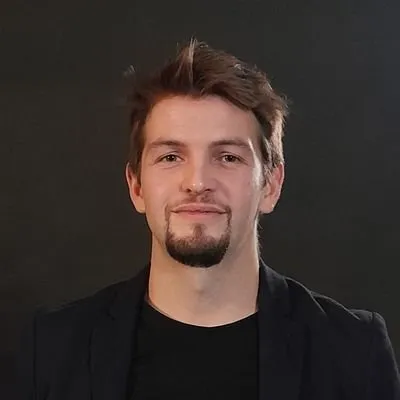
 Sign in with Google
Sign in with Google 
